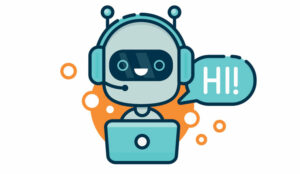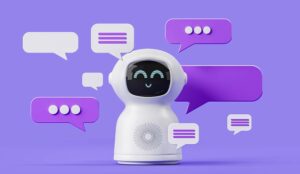Mia Schulz of OBI4wan interviews two experts to find out how to build a human-like chatbot.
Over the past years, a lot has happened on the technical side of chatbot development. Currently, easy-to-use chatbot platforms powered by AI revolutionize the way we build bots – the times that only technical people could develop a chatbot are over.
Also, people without any coding knowledge at all can start building a conversational agent.
This is a good moment to reflect and move away from the technical focus towards a focus on the conversational side. After all, we should not forget that our chatbots are interacting with our valued customers that we want to keep happy.
I talked with Koen Hallmann, Data Analyst at OBI4wan, and Maaike Groenewege, Conversational Consultant at Convocat, about their vision on human-like chatbots.
What Is a Human-Like Chatbot?
Chatbots are perceived as more human-like when they communicate in a conversational human voice.
This is achieved by integrating one of the following three elements in their language: informal language, personalization, such as greeting someone by name, and inviting rhetoric.
The latter is a means to stimulate a feeling of mutual understanding, for instance by letting the chatbot ask for feedback during a conversation.
When asked how she would define a human-like chatbot, Maaikes takes a step back and emphasizes the importance of usability.
“For me, human-like chatbots are first of all user-friendly. When we as humans talk to one another, we take it for granted that we understand each other,” adds Maaike.
“When it comes to chatbots, we have the same expectations. We don’t have a lot of tolerance for a dead-end bot that doesn’t understand our questions.”
According to Maaike, the biggest challenge for a chatbot is to find out what people are really asking.
Maaike explains: “On a website, a lot of information is more descriptive in nature and based on “What” questions. But when we talk to a chatbot, we typically ask “How” questions: we want to find real solutions to our problems.”
“When you look at customer service agents, they have a lot of knowledge and also know all the exceptions. They know what the difference between customer A and customer B is and they can easily pull in the context.”
“In contrast, a chatbot will not have this level of expertise and emphasis. But it is really good at answering less-complex, frequently asked questions. So customer service agents and chatbots can make a great team.”
Using Rules of Communication to Make Chatbots More Human-Like
To make sure humans and bots understand each other, Koen advises looking at our own unwritten rules of communication that have evolved over thousands of years.
“We should try to use our human communication rules as a standard when we build chatbots, as people expect to communicate in that way,” says Koen.
He explains that we humans talk with each other based on specific rules that we all implicitly know and act by. The British philosopher of language Paul Grice has described these rules in his Cooperative Principle and the Maxims of Conversation.
One of the four maxims concerns the quantity of what we say. According to this rule, you don’t leave out important things in a conversation but you also don’t say more than is needed.
For instance, if you know when, but not how to return a package you ordered online, you don’t have to be told both, just how is enough.
Koen emphasizes: “If you break those rules, people get annoyed. In a chatbot this rule breaking occurs, for example, when it gives answers that are way too long or when it provides information that is outdated.”
Therefore Koen strongly advises that the person responsible for creating the chatbot dialogues should not only be good at writing in the right tone of voice but also be acquainted with the rules of communication.
“You have to distinguish between style and substance. The substance is about what you say and the style concerns how you say it. The person who is responsible for building the chatbot dialogues should be aware of both,” concludes Koen.
5 Tips for Writing Human-Like Chatbot Dialogues
Once you are familiar with the rules of communication, it is time to start writing the dialogues.
From her own experience with chatbot projects and as conversational design expert, Maaike has the following tips to write chatbot dialogues:
1. Take the Consumer by the Hand
During a conversation it is important that the chatbot guides the human through the whole process and invites them to continue the conversation until they are fully helped.
To keep your customers engaged, it helps to end each chatbot turn with a question.
2. Write “One-Breath” Bot Answers
To make your chatbot truly conversational, make sure that your chatbot answers are not too long. A good rule of thumb is to let your chatbot conversations pass the ‘one breath test’.
When you read your chatbot answer aloud, does it fit into one breath? Then it’s perfect for using in your bot.
If you have to take extra breaths, then it’s a good idea to split your answer into several text bubbles.
3. Develop a Chatbot Persona
A chatbot persona helps your conversation designers to keep a consistent tone of voice and brand identity throughout your entire chatbot.
Furthermore, with the right personality, your chatbot can be a great means of engaging your customers even more!
4. Personalization
Personalization is also an interesting factor. You can treat different user groups in a different way and adapt your answers depending on who the chatbot is talking to. Think, for example, of returning versus new visitors, customers versus prospects or younger versus older consumers.
From his experience as an analyst, Koen adds the following tip:
5. A/B Test Your Dialogues
Sometimes you might doubt what works best with your chatbot. Imagine, for example, a customer that asks a very long question that the chatbot cannot understand.
Is it better to immediately transfer the customer to a human live agent or should the chatbot say, “I’m sorry, but your question is a bit too long for me. Can you shorten it so that I can help you further?”?
In order to find out what works better with your customers, you can just test both scenarios.
The Future of Conversational Design in Chatbots
Having witnessed the rapid developments in the area of AI and chatbots over the past years, Maaike can imagine that automation will also start playing a role in conversational design itself.
“Developments in the field are going so quickly. I can imagine that the development of dialogues for service chatbots may become automated at some point. But creative marketing bots will still be designed by conversational copywriters,” says Maaike.
Koen hopes that the focus of chatbot development will shift away from the technical aspects towards dialogue design
“With all the developments in AI, building chatbots is mostly done by technicians with little background knowledge of language,” adds Koen.
“Now that building chatbots is becoming easier and easier, it’s time to turn our focus back to language to create more natural conversations. Pragmatics can play a big role in this and I hope it gets the attention it deserves.”
“Tone of voice (style) is important, but it is more important that people’s (very human) expectations are met when they strike up a conversation.”
Author: Robyn Coppell
Published On: 20th Apr 2020 - Last modified: 21st Apr 2020
Read more about - Guest Blogs, OBI4wan



































